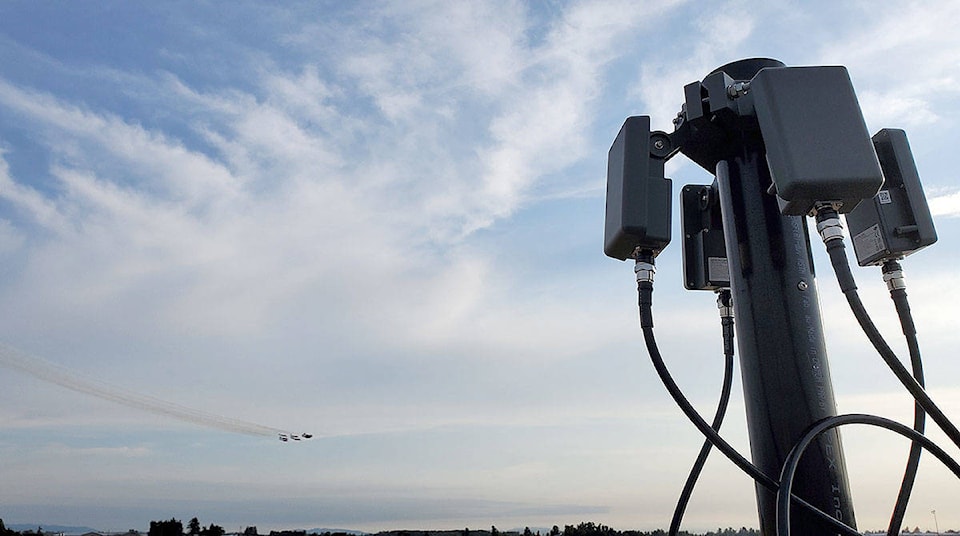A new technology was deployed at the recent Abbotsford International Airshow, allowing police to pinpoint drones violating the event’s restricted airspace.
“The beauty of [the system] is it can actually read the data from the drone,” said Brian Fentiman, CTO of BlueForce UAV, the company which installs and operates the technology.
“Over the course of three days, we had seven or eight drone detections,” he said. “This will actually tell you the exact GPS co-ordinates of the drone, how high it is, how fast it’s flying and where the pilot is.”
Prior to the show, The Abbotsford Police Department (APD) warned citizens to keep their drones away from event. The company worked with the APD to detect drones and dispatch police units to the location of the operators in range. The system was picking up drones as far away as 23 kilometres in the U.S.
Const. Rob Hryhorczuk, who was head of security for the airshow, said he thought the technology’s impact was “really positive.”
“We’re getting drone complaints all the time, even as high as 2,000 feet. This will go a long way for airports and towers.”
Drone operators illegally entering airspace has been a consistent problem at airports and airshows across North America, according to Jadene Mah, spokesperson for the airshow.
“It’s a huge safety concern. In some cases it will stop all flying operations if one is detected in the area,” she said. “It’s not just an airshow issue; it’s an airport issue and one that Transport Canada is having to actively manage.”
A drone incident in December of last year caused Gatwick Airport in London to cancel 1,000 flights over a 33-hour period, affecting 140,000 passengers with an estimated price tag of over $80 million.
If an airplane were to collide with a drone, the results could be devastating, said Fentiman, adding that there have been several near-misses in Canada in the last few years.
“You can’t really ignore something that you have the ability to manage. That’s what we try to stress to people. You know there is a risk, even if it’s only a two per cent risk.”
